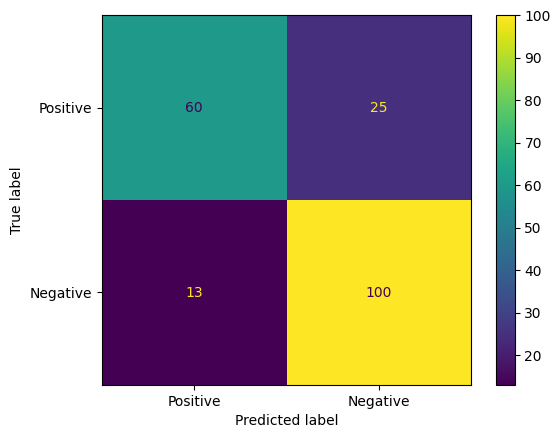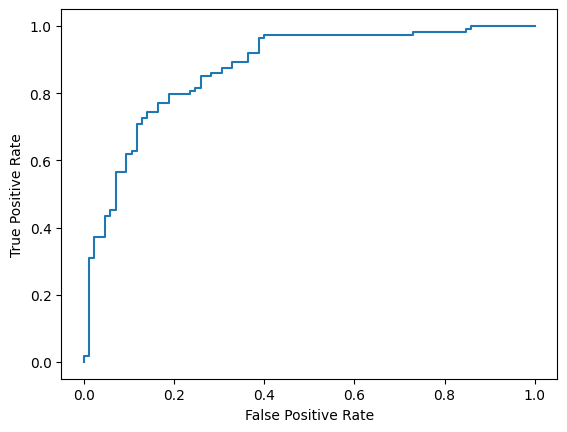1. खास जानकारी
इस कोडलैब में, पैरामीटर-एफ़िशिएंट ट्यूनिंग (पीईटी) का इस्तेमाल करके, पसंद के मुताबिक टेक्स्ट क्लासिफ़ायर बनाने का तरीका बताया गया है. पूरे मॉडल को फ़ाइन-ट्यून करने के बजाय, पीईटी के तरीके सिर्फ़ कुछ पैरामीटर अपडेट करते हैं. इससे मॉडल को ट्रेन करना आसान और तेज़ हो जाता है. इससे मॉडल को कम ट्रेनिंग डेटा के साथ भी नए व्यवहारों को सीखना आसान हो जाता है. इस तरीके के बारे में ज़्यादा जानकारी सभी के लिए एजाइल टेक्स्ट क्लासिफ़ायर की ओर में दी गई है. इसमें बताया गया है कि इन तकनीकों को सुरक्षा से जुड़े अलग-अलग टास्क पर कैसे लागू किया जा सकता है. साथ ही, यह भी बताया गया है कि इनका इस्तेमाल करके, सिर्फ़ कुछ सौ ट्रेनिंग उदाहरणों के साथ बेहतरीन परफ़ॉर्मेंस कैसे हासिल की जा सकती है.
इस कोडलैब में, LoRA पीईटी तरीके और छोटे Gemma मॉडल (gemma_instruct_2b_en) का इस्तेमाल किया गया है. ऐसा इसलिए किया गया है, क्योंकि इसे तेज़ी से और ज़्यादा बेहतर तरीके से चलाया जा सकता है. इस Colab में, डेटा डालने, उसे एलएलएम के लिए फ़ॉर्मैट करने, LoRA वेट को ट्रेन करने, और फिर नतीजों का आकलन करने का तरीका बताया गया है. इस कोडलैब में, ETHOS डेटासेट का इस्तेमाल किया गया है. यह डेटासेट, YouTube और Reddit पर की गई टिप्पणियों से तैयार किया गया है. इसका मकसद, नफ़रत फैलाने वाली भाषा का पता लगाना है. यह डेटासेट सार्वजनिक तौर पर उपलब्ध है. सिर्फ़ 200 उदाहरणों (डेटासेट का 1/4) पर ट्रेनिंग देने पर, यह एल्गोरिदम F1: 0.80 और आरओसी-एयूसी: 0.78 हासिल करता है. यह लीडरबोर्ड पर मौजूद, फ़िलहाल सबसे बेहतर एल्गोरिदम से थोड़ा ज़्यादा है. यह लेख लिखे जाने के समय, 15 फ़रवरी, 2024 को यह जानकारी दी गई थी. 800 उदाहरणों पर ट्रेनिंग देने पर, यह मॉडल 83.74 का एफ़1 स्कोर और 88.17 का आरओसी-एयूसी स्कोर हासिल करता है. आम तौर पर, gemma_instruct_7b_en जैसे बड़े मॉडल बेहतर परफ़ॉर्म करते हैं. हालांकि, उन्हें ट्रेनिंग देने और लागू करने की लागत भी ज़्यादा होती है.
ट्रिगर चेतावनी: इस कोडलैब में, नफ़रत फैलाने वाली भाषा का पता लगाने के लिए सुरक्षा क्लासिफ़ायर डेवलप किया जाता है. इसलिए, नतीजों के उदाहरणों और उनके आकलन में कुछ भयानक भाषा का इस्तेमाल किया गया है.
2. इंस्टॉल और सेटअप करना
इस कोडलैब के लिए, आपको बेस मॉडल डाउनलोड करने के लिए, keras (3), keras-nlp (0.8.0) का नया वर्शन और Kaggle खाता चाहिए.
!pip install -q -U keras-nlp
!pip install -q -U keras
Kaggle में लॉगिन करने के लिए, kaggle.json क्रेडेंशियल फ़ाइल को ~/.kaggle/kaggle.json पर सेव किया जा सकता है या Colab एनवायरमेंट में यह कोड चलाया जा सकता है:
import kagglehub
kagglehub.login()
इस कोडलैब की जांच, Keras के बैकएंड के तौर पर Tensorflow का इस्तेमाल करके की गई थी. हालांकि, इसमें Tensorflow, Pytorch या JAX का इस्तेमाल किया जा सकता है:
import os
os.environ["KERAS_BACKEND"] = "tensorflow"
3. ETHOS डेटासेट लोड करना
इस सेक्शन में, आपको वह डेटासेट लोड करना होगा जिस पर हमारे क्लासिफ़ायर को ट्रेनिंग देनी है. साथ ही, उसे ट्रेन और टेस्ट सेट में प्री-प्रोसेस करना होगा. आपको लोकप्रिय रिसर्च डेटासेट ETHOS का इस्तेमाल करना होगा. इसे सोशल मीडिया पर नफ़रत फैलाने वाली भाषा का पता लगाने के लिए इकट्ठा किया गया था. डेटासेट इकट्ठा करने के तरीके के बारे में ज़्यादा जानने के लिए, ETHOS: नफ़रत फैलाने वाली भाषा का पता लगाने वाला ऑनलाइन डेटासेट पेपर पढ़ें.
import pandas as pd
gh_root = 'https://raw.githubusercontent.com'
gh_repo = 'intelligence-csd-auth-gr/Ethos-Hate-Speech-Dataset'
gh_path = 'master/ethos/ethos_data/Ethos_Dataset_Binary.csv'
data_url = f'{gh_root}/{gh_repo}/{gh_path}'
df = pd.read_csv(data_url, delimiter=';')
df['hateful'] = (df['isHate'] >= df['isHate'].median()).astype(int)
# Shuffle the dataset.
df = df.sample(frac=1, random_state=32)
# Split into train and test.
df_train, df_test = df[:800], df[800:]
# Display a sample of the data.
df.head(5)[['hateful', 'comment']]
आपको कुछ ऐसा दिखेगा:
लेबल | टिप्पणी | |
0 |
|
|
1 |
|
|
2 |
|
|
3 |
|
|
4 |
|
|
4. मॉडल डाउनलोड करना और उसे इंस्टैंशिएट करना
दस्तावेज़ में बताया गया है कि Gemma मॉडल का इस्तेमाल कई तरीकों से आसानी से किया जा सकता है. Keras का इस्तेमाल करने के लिए, आपको यह तरीका अपनाना होगा:
import keras
import keras_nlp
# For reproducibility purposes.
keras.utils.set_random_seed(1234)
# Download the model from Kaggle using Keras.
model = keras_nlp.models.GemmaCausalLM.from_preset('gemma_instruct_2b_en')
# Set the sequence length to a small enough value to fit in memory in Colab.
model.preprocessor.sequence_length = 128
कुछ टेक्स्ट जनरेट करके, यह जांच की जा सकती है कि मॉडल काम कर रहा है या नहीं:
model.generate('Question: what is the capital of France? ', max_length=32)
5. टेक्स्ट की प्री-प्रोसेसिंग और सेपरेटर टोकन
मॉडल को हमारे इंटेंट को बेहतर तरीके से समझने में मदद करने के लिए, टेक्स्ट को प्री-प्रोसेस किया जा सकता है और सेपरेटर टोकन का इस्तेमाल किया जा सकता है. इससे, मॉडल के लिए ऐसा टेक्स्ट जनरेट करने की संभावना कम हो जाती है जो उम्मीद के मुताबिक फ़ॉर्मैट में न हो. उदाहरण के लिए, इस तरह का प्रॉम्प्ट लिखकर, मॉडल से सेंटीमेंट कैटगरी का अनुरोध किया जा सकता है:
Classify the following text into one of the following classes:[Positive,Negative] Text: you look very nice today Classification:
इस मामले में, हो सकता है कि मॉडल आपके हिसाब से नतीजे दिखाए या न दिखाए. उदाहरण के लिए, अगर टेक्स्ट में न्यू लाइन वर्ण शामिल हैं, तो मॉडल की परफ़ॉर्मेंस पर इसका बुरा असर पड़ सकता है. सेपरेटर टोकन का इस्तेमाल करना, ज़्यादा बेहतर तरीका है. इसके बाद, प्रॉम्प्ट इस तरह दिखेगा:
Classify the following text into one of the following classes:[Positive,Negative] <separator> Text: you look very nice today <separator> Prediction:
टेक्स्ट को पहले से प्रोसेस करने वाले फ़ंक्शन का इस्तेमाल करके, इसे अलग किया जा सकता है:
def preprocess_text(
text: str,
labels: list[str],
instructions: str,
separator: str,
) -> str:
prompt = f'{instructions}:[{",".join(labels)}]'
return separator.join([prompt, f'Text:{text}', 'Prediction:'])
अब, अगर पहले की तरह ही प्रॉम्प्ट और टेक्स्ट का इस्तेमाल करके फ़ंक्शन को चलाया जाता है, तो आपको वही आउटपुट मिलेगा:
text = 'you look very nice today'
prompt = preprocess_text(
text=text,
labels=['Positive', 'Negative'],
instructions='Classify the following text into one of the following classes',
separator='\n<separator>\n',
)
print(prompt)
इनसे यह आउटपुट मिलना चाहिए:
Classify the following text into one of the following classes:[Positive,Negative] <separator> Text:well, looks like its time to have another child <separator> Prediction:
6. आउटपुट पोस्ट-प्रोसेसिंग
मॉडल के आउटपुट, अलग-अलग संभावनाओं वाले टोकन होते हैं. आम तौर पर, टेक्स्ट जनरेट करने के लिए, सबसे ज़्यादा संभावना वाले कुछ टोकनों में से किसी एक को चुना जाता है. इसके बाद, वाक्य, पैराग्राफ़ या पूरे दस्तावेज़ बनाए जाते हैं. हालांकि, कैटगरी तय करने के लिए, यह ज़रूरी है कि मॉडल को लगता हो कि Positive की संभावना Negative से ज़्यादा है या इसके उलट.
आपने पहले जिस मॉडल को इंस्टैंशिएट किया था उसके आउटपुट को, अगला टोकन Positive या Negative है या नहीं, इसकी अलग-अलग संभावनाओं में प्रोसेस करने का तरीका यहां बताया गया है:
import numpy as np
def compute_output_probability(
model: keras_nlp.models.GemmaCausalLM,
prompt: str,
target_classes: list[str],
) -> dict[str, float]:
# Shorthands.
preprocessor = model.preprocessor
tokenizer = preprocessor.tokenizer
# NOTE: If a token is not found, it will be considered same as "<unk>".
token_unk = tokenizer.token_to_id('<unk>')
# Identify the token indices, which is the same as the ID for this tokenizer.
token_ids = [tokenizer.token_to_id(word) for word in target_classes]
# Throw an error if one of the classes maps to a token outside the vocabulary.
if any(token_id == token_unk for token_id in token_ids):
raise ValueError('One of the target classes is not in the vocabulary.')
# Preprocess the prompt in a single batch. This is done one sample at a time
# for illustration purposes, but it would be more efficient to batch prompts.
preprocessed = model.preprocessor.generate_preprocess([prompt])
# Identify output token offset.
padding_mask = preprocessed["padding_mask"]
token_offset = keras.ops.sum(padding_mask) - 1
# Score outputs, extract only the next token's logits.
vocab_logits = model.score(
token_ids=preprocessed["token_ids"],
padding_mask=padding_mask,
)[0][token_offset]
# Compute the relative probability of each of the requested tokens.
token_logits = [vocab_logits[ix] for ix in token_ids]
logits_tensor = keras.ops.convert_to_tensor(token_logits)
probabilities = keras.activations.softmax(logits_tensor)
return dict(zip(target_classes, probabilities.numpy()))
उस फ़ंक्शन की जांच करने के लिए, उसे पहले बनाए गए प्रॉम्प्ट के साथ चलाएं:
compute_output_probability(
model=model,
prompt=prompt,
target_classes=['Positive', 'Negative'],
)
इससे आपको कुछ ऐसा आउटपुट मिलेगा:
{'Positive': 0.99994016, 'Negative': 5.984089e-05}
7. इसे क्लासिफ़ायर के तौर पर रैप करना
इस्तेमाल करने में आसानी के लिए, आपने अभी जो फ़ंक्शन बनाए हैं उन्हें sklearn जैसे क्लासिफ़ायर में रैप किया जा सकता है. इसमें predict() और predict_score() जैसे आसानी से इस्तेमाल किए जा सकने वाले और जाने-पहचाने फ़ंक्शन शामिल होते हैं.
import dataclasses
@dataclasses.dataclass(frozen=True)
class AgileClassifier:
"""Agile classifier to be wrapped around a LLM."""
# The classes whose probability will be predicted.
labels: tuple[str, ...]
# Provide default instructions and control tokens, can be overridden by user.
instructions: str = 'Classify the following text into one of the following classes'
separator_token: str = '<separator>'
end_of_text_token: str = '<eos>'
def encode_for_prediction(self, x_text: str) -> str:
return preprocess_text(
text=x_text,
labels=self.labels,
instructions=self.instructions,
separator=self.separator_token,
)
def encode_for_training(self, x_text: str, y: int) -> str:
return ''.join([
self.encode_for_prediction(x_text),
self.labels[y],
self.end_of_text_token,
])
def predict_score(
self,
model: keras_nlp.models.GemmaCausalLM,
x_text: str,
) -> list[float]:
prompt = self.encode_for_prediction(x_text)
token_probabilities = compute_output_probability(
model=model,
prompt=prompt,
target_classes=self.labels,
)
return [token_probabilities[token] for token in self.labels]
def predict(
self,
model: keras_nlp.models.GemmaCausalLM,
x_eval: str,
) -> int:
return np.argmax(self.predict_score(model, x_eval))
agile_classifier = AgileClassifier(labels=('Positive', 'Negative'))
8. मॉडल को बेहतर बनाना
LoRA का मतलब है, कम रैंक वाला अडैप्टेशन. यह फ़ाइन-ट्यूनिंग की एक तकनीक है. इसका इस्तेमाल, लार्ज लैंग्वेज मॉडल को बेहतर बनाने के लिए किया जा सकता है. इस बारे में ज़्यादा जानने के लिए, LoRA: Low-Rank Adaptation of Large Language Models पेपर पढ़ें.
Gemma को Keras में लागू करने पर, आपको enable_lora() तरीका मिलता है. इसका इस्तेमाल, फ़ाइन-ट्यूनिंग के लिए किया जा सकता है:
# Enable LoRA for the model and set the LoRA rank to 4.
model.backbone.enable_lora(rank=4)
LoRA को चालू करने के बाद, फ़ाइन-ट्यून करने की प्रोसेस शुरू की जा सकती है. Colab पर हर एपिसोड को पूरा होने में करीब पांच मिनट लगते हैं:
import tensorflow as tf
# Create dataset with preprocessed text + labels.
map_fn = lambda xy: agile_classifier.encode_for_training(*xy)
x_train = list(map(map_fn, df_train[['comment', 'hateful']].values))
ds_train = tf.data.Dataset.from_tensor_slices(x_train).batch(2)
# Compile the model using the Adam optimizer and appropriate loss function.
model.compile(
loss=keras.losses.SparseCategoricalCrossentropy(from_logits=True),
optimizer=keras.optimizers.Adam(learning_rate=0.0005),
weighted_metrics=[keras.metrics.SparseCategoricalAccuracy()],
)
# Begin training.
model.fit(ds_train, epochs=4)
ज़्यादा एपिसोड के लिए ट्रेनिंग करने पर, बेहतर परफ़ॉर्मेंस मिलेगी. हालांकि, ऐसा तब तक होगा, जब तक ओवरफ़िटिंग नहीं होती.
9. नतीजों की जांच करना
अब आपके पास, हाल ही में ट्रेन किए गए एजाइल क्लासिफ़ायर के आउटपुट की जांच करने का विकल्प है. यह कोड, टेक्स्ट के हिसाब से क्लास का अनुमानित स्कोर दिखाएगा:
text = 'you look really nice today'
scores = agile_classifier.predict_score(model, text)
dict(zip(agile_classifier.labels, scores))
{'Positive': 0.99899644, 'Negative': 0.0010035498}
10. मॉडल का आकलन
आखिर में, आपको दो सामान्य मेट्रिक, F1 स्कोर और AUC-ROC का इस्तेमाल करके, हमारे मॉडल की परफ़ॉर्मेंस का आकलन करना होगा. F1 स्कोर, किसी खास क्लासिफ़िकेशन थ्रेशोल्ड पर प्रिसिज़न और रीकॉल के हार्मोनिक मीन का आकलन करके, फ़ॉल्स नेगेटिव और फ़ॉल्स पॉज़िटिव गड़बड़ियों को कैप्चर करता है. दूसरी ओर, AUC-ROC अलग-अलग थ्रेशोल्ड के बीच, असल पॉज़िटिव रेट और फ़ॉल्स पॉज़िटिव रेट के बीच के ट्रेडऑफ़ को कैप्चर करता है और इस कर्व के नीचे के हिस्से का हिसाब लगाता है.
from sklearn.metrics import f1_score, roc_auc_score
y_true = df_test['hateful'].values
# Compute the scores (aka probabilities) for each of the labels.
y_score = [agile_classifier.predict_score(model, x) for x in df_test['comment']]
# The label with highest score is considered the predicted class.
y_pred = np.argmax(y_score, axis=1)
# Extract the probability of a comment being considered hateful.
y_prob = [x[agile_classifier.labels.index('Negative')] for x in y_score]
# Compute F1 and AUC-ROC scores.
print(f'F1: {f1_score(y_true, y_pred):.2f}')
print(f'AUC-ROC: {roc_auc_score(y_true, y_prob):.2f}')
F1: 0.84 AUC-ROC: = 0.88
मॉडल के अनुमान का आकलन करने का एक और दिलचस्प तरीका, कन्फ़्यूज़न मैट्रिक है. भ्रम की मैट्रिक, अनुमान से जुड़ी अलग-अलग तरह की गड़बड़ियों को विज़ुअल तौर पर दिखाएगी.
from sklearn.metrics import confusion_matrix, ConfusionMatrixDisplay
cm = confusion_matrix(y_true, y_pred)
ConfusionMatrixDisplay(
confusion_matrix=cm,
display_labels=agile_classifier.labels,
).plot()

आखिर में, अलग-अलग स्कोरिंग थ्रेशोल्ड का इस्तेमाल करते समय, अनुमान से जुड़ी संभावित गड़बड़ियों के बारे में जानने के लिए आरओसी कर्व भी देखा जा सकता है.
from sklearn.metrics import RocCurveDisplay, roc_curve
fpr, tpr, _ = roc_curve(y_true, y_prob, pos_label=1)
RocCurveDisplay(fpr=fpr, tpr=tpr).plot()


